If you find yourself reading this week’s post here on Arcade Blogger, it would be fair to assume that you will be familiar with the arcade game Q*Bert. Released in 1982, the game instantly cemented itself as one of the staples of the Golden Age of Classic Arcade Gaming. It was an immediate hit for Gottlieb, who up to that point were more known for their illustrious history in pinball machine production.
Q*Bert was designed by Warren Davis, with the help of two other people, Jeff Lee and David Thiel. The game was born out of what Warren describes as a very creative, open and free environment. Headed up by industry legend Tim Skelly of Cinematronics fame, this fledgling video game development department was finding its feet in a world dominated by Atari and Williams.

Warren describes his early time at Gottlieb as more a learning experience. There were no rules or deadlines, and development systems were created on the fly and shared by everyone. Warren’s brief was twofold: learn how to write a video game, then create one!
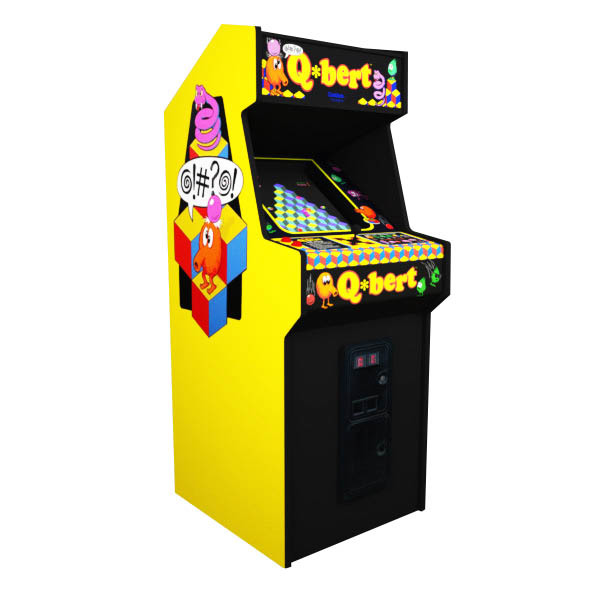
Inspiration for the game came by chance. Walking by a colleague’s desk one morning, Warren stopped in his tracks. Displayed on the computer monitor of Kan Yabumoto (of Mad Planets fame), was a pattern of three-dimensional blocks filling the screen. Studying these geometric shapes for some time, Warren envisioned in his mind’s eye a pyramid structure that would ultimately become the background environment for Q*Bert.
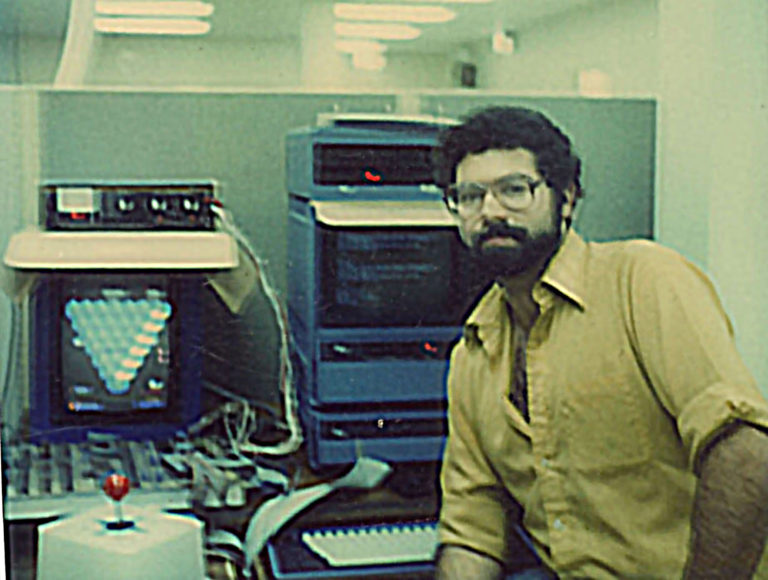
The purpose here is not to go into the development of the game, but suffice to say that once complete, the game would have started a vigorous testing process, to gauge its suitability for production:
- In-house testing – where the game is played by colleagues and staff at Gottlieb.
- Focus Groups – players are invited into a room and are observed playing the game in a controlled environment and asked for feedback.
- And perhaps most importantly of all, location-based testing at local arcades. Many manufacturers used this method. An arrangement was made with a local arcade, where in return for placing the game within the arcade for a few days, the arcade was allowed to keep all the coins dropped into the game by players. Warren himself was able to sit in a real arcade and get to watch player reaction to Q*Bert. And it was rather telling. Warren quickly discovered that he could learn more from watching what players actually did with the game, rather than what they were willing to share about their reaction to the game.
The cabinets used for testing would often be referred to as pre-production ‘prototypes’. As you’d expect, very few of these would be produced. They were often unique in their design, differing significantly from a standard production machine and might have unique artwork and controls or house an early version of the game ROM. In some cases, a prototype classic arcade machine might never make it to full production after receiving market feedback.
So as you can imagine, these prototypes are very rare, and as a result, very highly prized by collectors today.

Q*Bert itself hadn’t yet been given an identity. So the early versions of the cabinets were built using its preliminary title of @!#?@! on the marquee.
It was a recent post on KLOV that got me looking at Q*Bert prototypes specifically. DNS Games & Parts posted up a few pictures of a cabinet he had acquired:



The suspicions about this cabinet turned out to be correct. Notice the main giveaway is the lack of vinyl artwork on the sides of the cabinet. Here, the cabinet has generic stencilled artwork.
Some drama ensued about what should be done with it, but the cabinet was eventually traded with another collector for a production Q*Bert, and has been saved ready to be restored.
After a bit of digging around, I noticed that back in 2012, another KLOV user Craig Anstett shared pictures of a Q*Bert prototype he had acquired from eBay. Not only that, it turned out to be serial number 001!

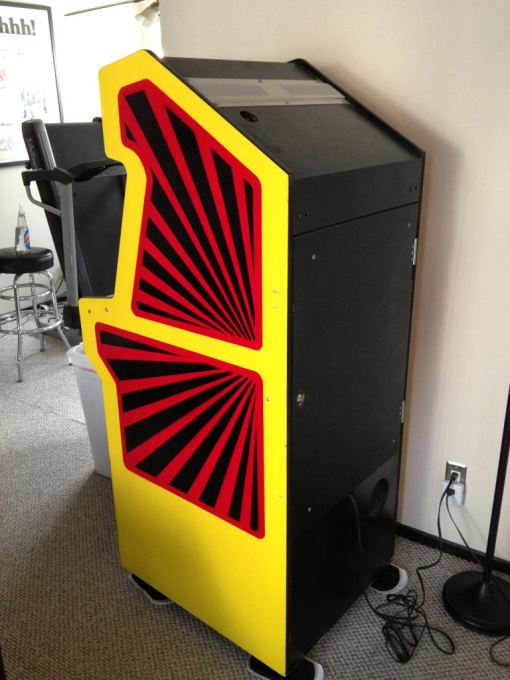



Complete with hand-drawn marquee artwork and one-off CPO artwork, the machine was originally purchased by a Gottlieb executive after being out on test and stored in his basement for the past 30 years. The cabinet is in remarkable condition.

Notice that the Q*Bert character wasn’t even in its final stage at this point. He still looks roughly drawn and more similar to concept drawings that we have seen over the years. He even looks different on the CPO artwork:

There are a number of differences on the control panel that Craig was good enough to study and list:
1. The game on the control panel is called “@!#?@!”, not Q*Bert.
2. The Gottlieb trademark exists outside of the instructions.
3. The production Q*Bert has one extra instruction – Stay on pyramid! Only jump off to use disk. We assume that people were constantly jumping to their death so they added this.
4. Pyramid cubes go up much higher on the left and right sides than the production version.
5. One and two player icons are much larger on prototype.
6. Characters are “shaded” much more on the production art.
7. Obviously, Q*Bert himself is much different. Also, his name is spelled “Q-Bert” on the prototype and “Q*Bert” on production.
8. The entire panel itself is about an inch deeper.
I spoke to Craig about how he acquired the machine:
I came across it browsing eBay one day. I noticed the artwork looked hand-drawn but it was far too professional to have been done by a hobbyist. Likewise with the stencilled art on the sides. That tipped me that it was an early test game but I didn’t know it was the very first one until I opened it up.
I called the seller on the phone to see if they had any back story on it. The minute he said “My wife’s father used to work at Gottlieb” I pressed “Buy It Now” instantly!

What an incredible find. A Q*Bert prototype cabinet with serial number 001!
Craig was fortunate enough to meet Warren at a seminar a couple of years later, and got him to sign his control panel:
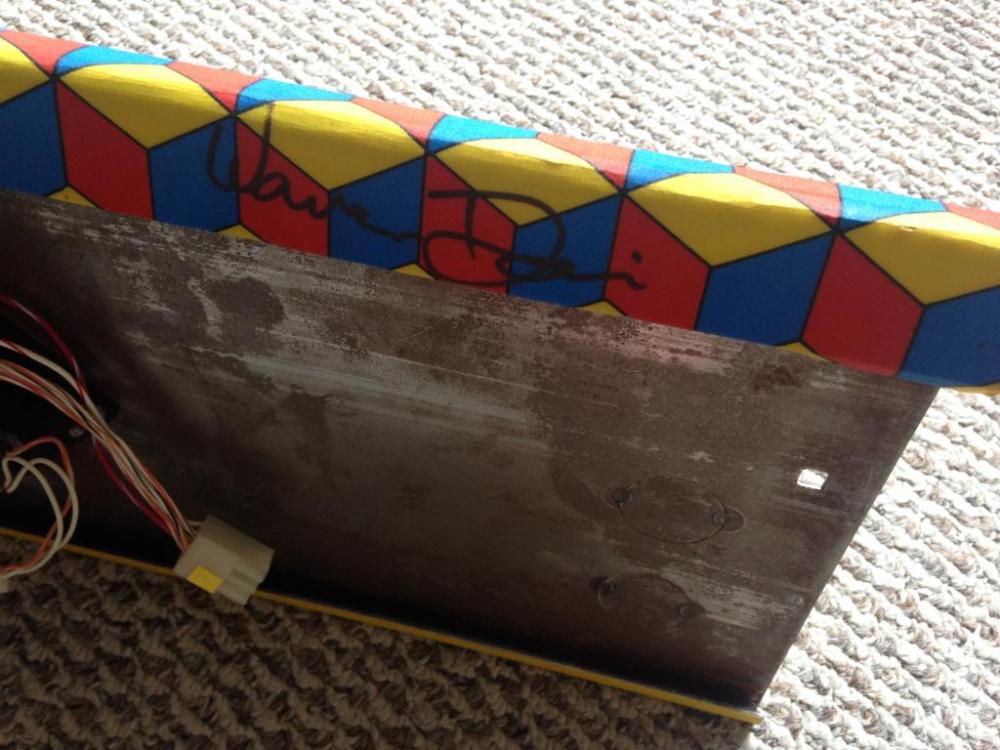
In March this year, I paid a visit to Warren Davis at his home in California, and talked about this cabinet. We had a cool discussion about Q*Bert over breakfast.

I should have known of course that Warren has his own prototype Q*Bert too!



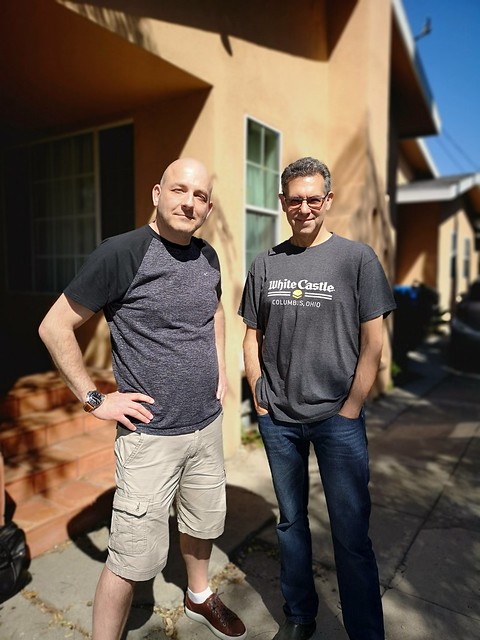
So there you have it. It really is amazing that these prototype cabinets still turn up today, and that there are collectors out there willing to give them a home.
I would encourage you to watch the following two videos where Warren tells the story of how Q*Bert came about during his talk last year at Free Play Florida. It was for me the highlight of the show and a must watch if you have a few minutes spare:
Thanks to YouTube user “The Presidential Tourist” for these videos.
I would like to thank collector Craig Anstett, DNS Games & Parts and of course Warren Davis for their assistance in pulling this article together.
See you next time.
Tony

I was at the Midwest Gaming Classic today in Milwaukee and in a quiet corner I saw a Q*Bert machine…with Jeff Lee sitting next to it! I couldn’t think of anything to say; it’s too bad I didn’t see this post earlier. Perhaps I could have asked him about prototypes and playtesting. I thought David Thiel was supposed to be there too but didn’t see him on they printed schedule they gave me.
LikeLiked by 1 person
Fascinating article Tony. Keep em coming!
LikeLiked by 1 person
Interesting story. Wanted to point out that you stated that Warren’s proto cp looks like a final production… yet Warren’s proto cabinet cp looks like the other proto cp in the pictures shown?
LikeLiked by 1 person
Hi Steven – yeah it’s actually a combo of the two. I believe it is a proto CP, but with the additional production artwork added to the front!
LikeLike